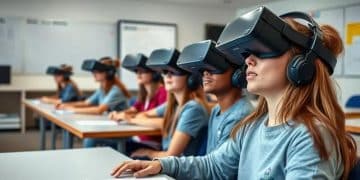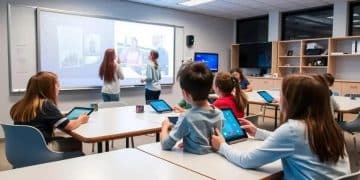Online course trends: Emerging learning methods
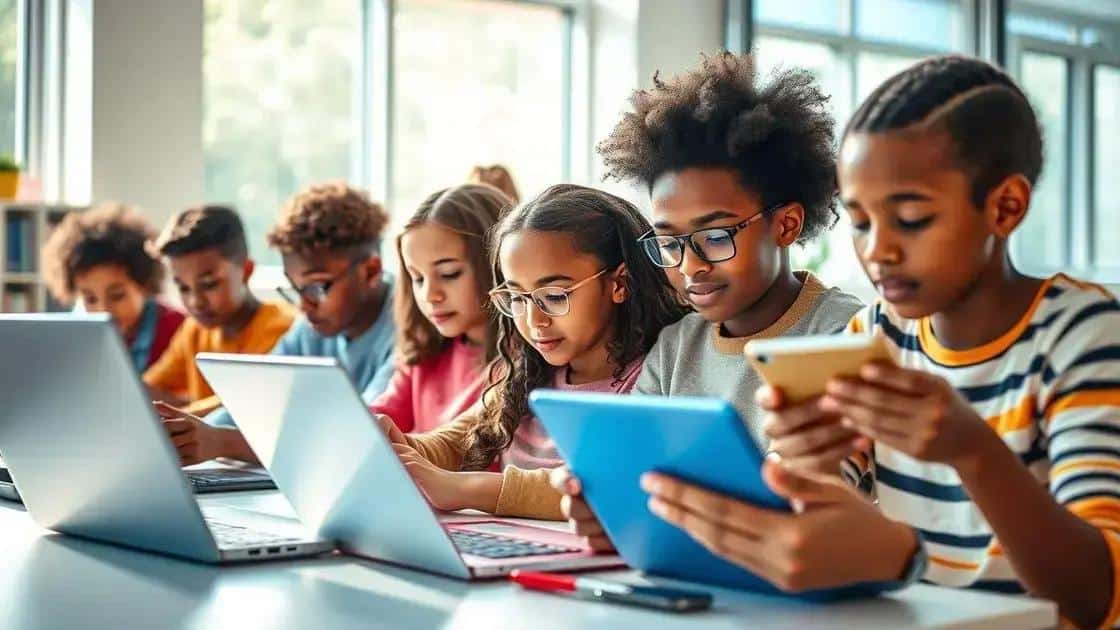
Current trends in online education, including personalized learning, microlearning, and the use of virtual reality, are transforming how students engage with and absorb educational content, enhancing overall learning experiences.
Online course trends are reshaping education, opening avenues for learners worldwide. What does this mean for your learning journey? Dive in to explore how these trends can enhance your experience.
Current trends in online courses
Understanding current trends in online courses helps us navigate the evolving landscape of education. With technology advancing rapidly, learning methods are becoming more innovative and accessible to everyone.
Interactive Learning Tools
Online courses now often incorporate interactive tools that enhance the learning experience. These tools engage students more effectively than traditional methods. Here are some examples of these tools:
- Quizzes and polls to test knowledge
- Discussion forums for peer interaction
- Video lectures with real-time feedback
- Gamification elements to make learning fun
Utilizing these interactive elements not only makes learning enjoyable but also deepens understanding and retention of information.
Microlearning’s Popularity
Another significant trend is the rise of microlearning. This approach offers bite-sized lessons that are easier to digest. Many learners find that short, focused sessions fit better into their busy lives, allowing them to absorb information without feeling overwhelmed. Microlearning provides flexibility, and here are some advantages:
- Convenient learning on-the-go
- Higher engagement through short content
- Effective for quick skill acquisition
Moreover, this method allows learners to revisit materials easily when needed, contributing to better long-term retention.
As we explore these trends, it’s evident that technology plays a pivotal role in shaping education. Online courses are no longer just about lectures; they are becoming interactive ecosystems that cater to various learning styles.
Adjustments to instructional methods are creating opportunities for diverse learners. From personalized learning paths to adaptive assessments, the future of education continues to focus on the learner’s needs and preferences.
Benefits of interactive learning tools
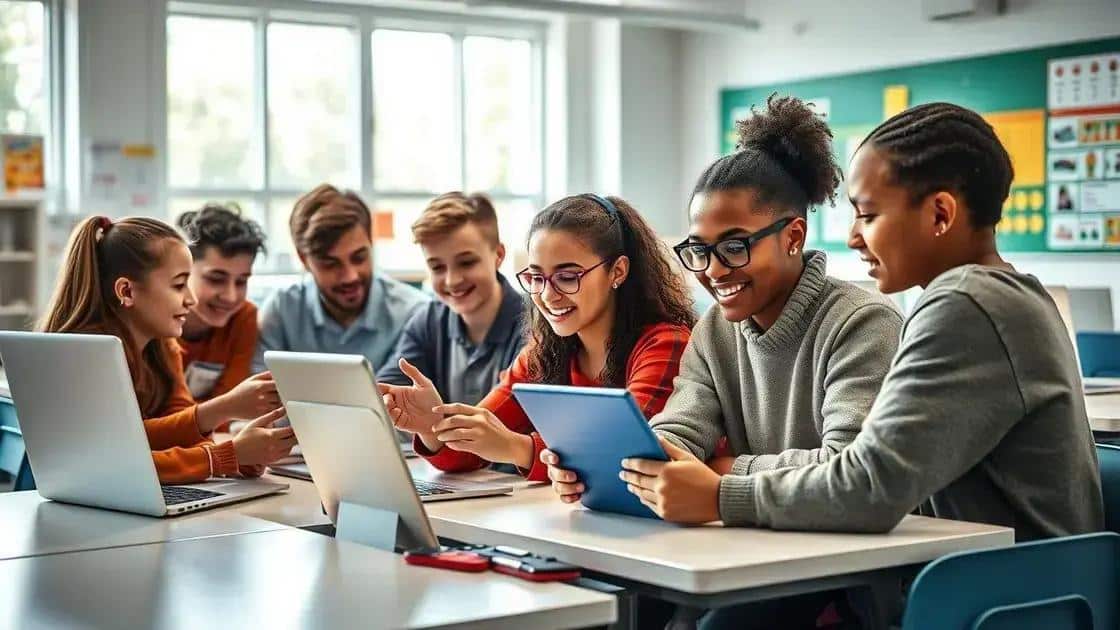
Exploring the benefits of interactive learning tools reveals how they enhance educational experiences. These tools not only engage students but also facilitate deeper understanding of the material.
Enhanced Engagement
Interactive tools keep learners interested and motivated. When students participate actively, they retain information better. Engaging with content through quizzes and activities fosters a dynamic learning environment.
- Immediate feedback helps students adjust their understanding.
- Collaborative learning through forums promotes communication.
- Gamified elements make lessons enjoyable and motivating.
This active participation encourages students to take charge of their own learning journey. They can explore topics in a way that traditional lectures rarely allow.
Personalized Learning Experiences
Another significant benefit is the ability to tailor education to individual needs. Interactive tools can adapt based on students’ strengths and weaknesses. This customization ensures that every learner gets the support they need.
- Adaptive learning technologies adjust difficulty levels.
- Personalized content addresses unique learning styles.
- Self-paced learning allows for mastery before moving on.
As a result, students can progress at their own speed, leading to improved outcomes and greater confidence in their skills.
Overall, the integration of interactive learning tools in online courses makes education more accessible. By making lessons engaging and personalized, we prepare students for success in a digital world.
The rise of microlearning in education
Understanding the rise of microlearning in education highlights how learning is evolving. This method provides short, focused segments of learning that fit easily into our busy schedules.
What is Microlearning?
Microlearning involves delivering content in small, manageable pieces. Instead of long lectures, students engage with brief lessons that take only a few minutes to complete. This format allows learners to absorb information quickly and efficiently.
- Short videos covering a single topic.
- Quick quizzes to test knowledge.
- Infographics highlighting key points.
By breaking down information, microlearning caters to different learning styles and helps maintain attention.
Benefits of Microlearning
This approach has several benefits that appeal to today’s learners. It enables flexibility and convenience, so students can learn at their own pace. Here are some of the main advantages:
- Higher retention of information due to short bursts of learning.
- Accessibility for learners who are often on the go.
- Immediate application of knowledge in real-life situations.
As microlearning becomes more popular, it integrates well with technology. Many platforms now offer these bite-sized lessons, which make education more engaging.
This method also promotes continuous learning. Students can revisit topics whenever necessary, ensuring they grasp the concepts thoroughly. The flexibility of microlearning fits well into today’s fast-paced world.
Future predictions for online education
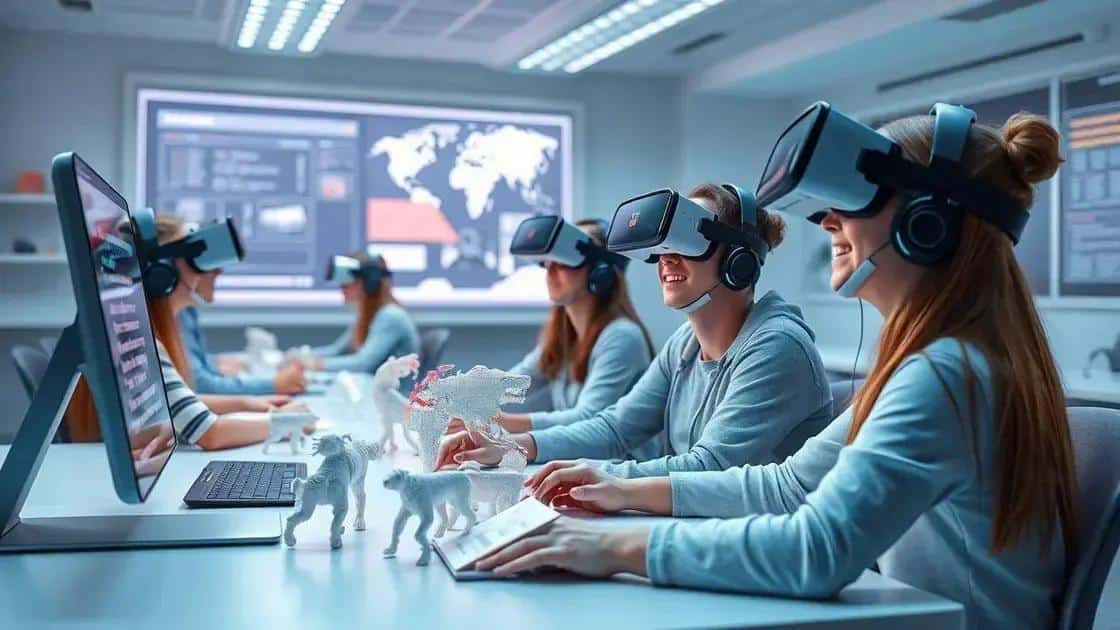
Future predictions for online education reveal exciting possibilities for learners worldwide. As technology continues to evolve, we can expect significant changes in how education is delivered and experienced.
Increased Personalization
One major trend is the shift toward more personalized learning experiences. With advancements in AI and data analytics, educational platforms can tailor content to meet individual needs and preferences.
- Adaptive learning systems will customize lessons based on student performance.
- Personalized feedback will enhance understanding and retention.
- Learning paths can adjust in real-time to match student progress.
This ability to personalize education makes learning more efficient and relevant for each student, increasing their motivation and engagement.
Greater Use of Virtual and Augmented Reality
Another exciting prediction is the integration of virtual reality (VR) and augmented reality (AR) into online education. These technologies will create immersive learning environments where students can explore subjects in ways that were previously impossible.
- VR can simulate real-world scenarios for practical learning.
- AR can enhance textbooks with interactive elements.
- Students can explore complex concepts through 3D models.
The engaging nature of these experiences will help students understand difficult topics more clearly and deeply.
Additionally, as online education becomes more mainstream, we anticipate increased collaboration among students from diverse backgrounds. Online platforms will facilitate global classrooms where learners can interact and share perspectives, enriching the educational experience.
Overall, the future of online education looks bright, with innovative technologies transforming how students learn and interact with each other.
personalized learning, students will receive tailored experiences designed to suit their needs. Virtual and augmented reality tools will make learning more engaging by creating immersive environments. Furthermore, as these technologies evolve, collaboration among students globally will be enhanced, allowing for diverse interactions. Embracing these trends is crucial for preparing students for success in a rapidly changing world. Online education is not just about learning; it’s about creating a vibrant community of global learners.
FAQ – Frequently Asked Questions About Online Education Trends
What is microlearning?
Microlearning involves short, focused segments of learning that allow students to absorb information quickly and efficiently.
How can virtual reality enhance online education?
Virtual reality provides immersive environments where students can engage in practical learning experiences that traditional methods cannot offer.
What are the benefits of personalized learning?
Personalized learning tailors educational experiences to meet individual needs, making learning more relevant and effective for each student.
How will global collaboration impact learners?
Global collaboration will connect students from diverse backgrounds, enriching their educational experiences and broadening their perspectives.

